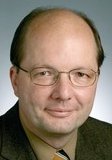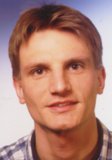Keynotes
Wednesday, 19th - 8:45
Rolf Ernst
Automotive Communication - From Buses to Switched Networks
Thursday, 20th - 9:00
Michael Paulitsch
Dependable and secure computing and networks in aerospace - the past, the present and a glimpse into the future
Friday, 21st - 9:00
Chenyang Lu
Real-Time Wireless Control Networks for Cyber-Physical Systems
 |
Rolf Ernst Automotive Communication - From Buses to Switched Networks Abstract: Today, automotive networks consist of a heterogeneous system of different field buses and gateways with new protocols and topologies in almost every generation. The network is tailored to the set of applications integrated in a car following different cost, safety, and performance targets. First required by the infotainment systems, Switched Ethernet is about to be introduced in cars and has become a hot candidate as backbone and integration platform for future automotive systems. After a short overview on the requirements leading to this development, the talk will elaborate on the opportunities, the limitations and fallacies behind that development, and will pledge for a holistic approach for the design and optimization of such networks. Sort bio: Rolf Ernst received a diploma in computer science and a Dr.-Ing. (with honors) in electrical engineering from the University of Erlangen-Nuremberg, Germany, in 81 and 87. After 2 years at Bell Laboratories, Allentown, PA, he joined the Technical University Braunschweig, Germany, where he chairs a university institute of 55 researchers and staff. He is a full professor and was Head of the Department of Electrical Engineering from 1999 to 2001. His research activities include embedded system design and design automation. The activities are currently supported by the German Deutsche Forschungsgemeinschaft, by the German BMBF, by European programs, and by industrial contracts, such as from Intel, Thomson, Ford, Bosch, and Volkswagen. He gave numerous invited presentations and tutorials at major international events and contributed to seminars and summer schools in the areas of hardware/software co-design, embedded system architectures, and system modeling and verification. He chaired major international events, such as the International Conference on Computer Aided Design of VLSI (ICCAD), or the Design Automation and Test in Europe (DATE) Conference and Exhibition, and was Chair of the European Design Automation Association (EDAA), which is the main sponsor of DATE. He is a founding member of the ACM Special Interest Group on Embedded System Design (SIGBED), and was a member of its first board of directors. He is a member and activity leader of the European Networks-of-Excellence Artist1 (real-time systems), Artist 2 (embedded systems), and ArtistDesign. He is an elected member (Fachkollegiat) and Deputy Spokesperson of the "Computer Science" review board of the German DFG. He is an advisor to the German Ministry of Economics and Technology for the high-tech entrepreneurship program EXIST. He is an IEEE Fellow and served as an ACM-SIGDA Distinguished Lecturer. He is a member of the German Academy of Science and Engineering, acatech. |
 |
Michael Paulitsch EADS Innovation Dependable and secure computing and networks in aerospace - the past, the present and a glimpse into the future Abstract: Embedded control systems in aircraft has been regarded as one of the most challenging engineering topics regarding dependability. Pilots of modern aircraft today are fully relying on embedded electronics to master their flight with an extremely successful and daily improving safety record. Automation in the cockpit with systems like fly-by-wire and flight management systems has been requiring the highest levels of dependable design. Today, automation stretches into air traffic control and will require direct cooperation between aircraft i.e. reaching a new level of integration. For this as well as passenger and maintenance connectivity not only dependability, but security aspects increases. Some recent embedded architectures and current architectural and system challenges will be presented. Short Bio: Michael Paulitsch is Scientific Director at EADS Innovation in the Electronic, Communication and Intelligent Systems Department based in Munich, Germany. His work focuses on dependable embedded and secure embedded computing and networks. Before he worked at Honeywell Aerospace in the U.S. on software and electronic platforms in the area of business, regional, air transport, and human space avionics and engine control electronics. He was a key contributor to the avionics electronic architecture of Orion, NASA's next generation human space vehicle. Michael Paulitsch published multiple scientific papers in his area of expertise, participates in internal scientific conference committees and holds multiple patents. He holds a PhD in technical sciences from the Vienna University of Technology, Vienna, Austria with emphasis on dependable embedded systems and a doctoral degree in economics and social science with emphasis on production aspects. |
 |
Chenyang Lu Washington University in St. Louis, http://www.cse.wustl.edu/~lu Real-Time Wireless Control Networks for Cyber-Physical Systems Abstract: Wireless control systems represent a new frontier of cyber-physical systems. Rapid adoption of wireless sensing and actuation networking standards has demonstrated the feasibility of reliable wireless communication for industrial automation. However, wireless control networks face significant challenges in meeting real-time communication requirements of control systems. Furthermore, close coupling between control and communication requires a cyber-physical co-design approach to optimize control performance under stringent resources constraints. This talk will present recent advances in real-time wireless control networks. (1) I will describe a new real-time wireless scheduling theory that supports real-time performance analysis for wireless control networks. (2) I will address the scheduling-control co-design problem of determining the optimal sampling rates of feedback control loops sharing a wireless network. (3) I will present Wireless Cyber-Physical Simulator (WCPS), a holistic environment for realistic simulations of large-scale wireless control systems, as well as two case studies of wireless structural control for civil infrastructure. I will conclude my talk by highlighting future challenges and opportunities on wireless cyber-physical systems. Short Bio: Chenyang Lu is a Professor of Computer Science and Engineering at Washington University in St. Louis. Professor Lu is Editor-in-Chief of ACM Transactions on Sensor Networks and Associate Editor of Real-Time Systems. He also serves as Program Chair of premier conferences such as IEEE Real-Time Systems Symposium (RTSS 2012), ACM/IEEE International Conference on Cyber-Physical Systems (ICCPS 2012) and ACM Conference on Embedded Networked Sensor Systems (SenSys 2014). Professor Lu is the author and co-author of over 100 research papers with over 10000 citations and an h-index of 45. He received the Ph.D. degree from University of Virginia in 2001, the M.S. degree from Chinese Academy of Sciences in 1997, and the B.S. degree from University of Science and Technology of China in 1995, all in computer science. His research interests include real-time systems, wireless sensor networks and cyber-physical systems.
|
